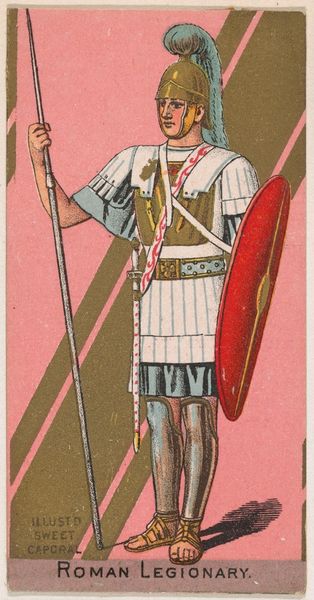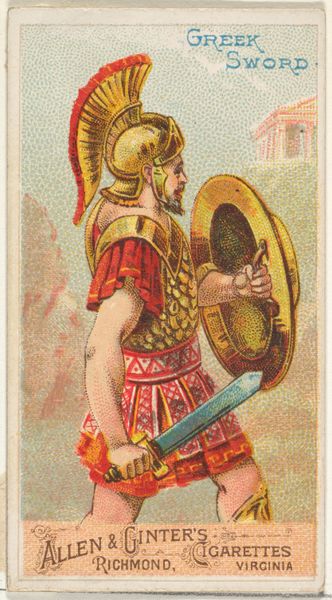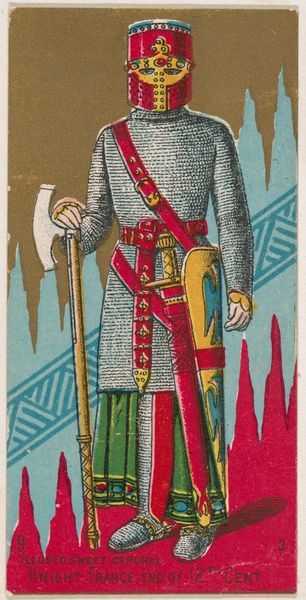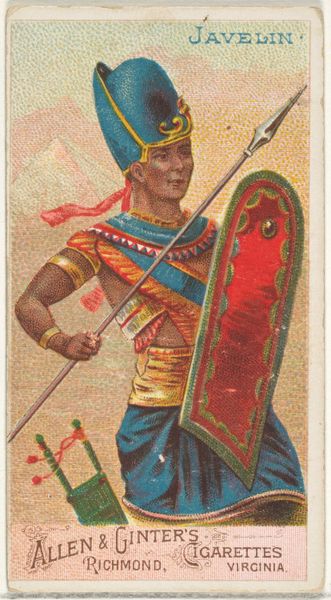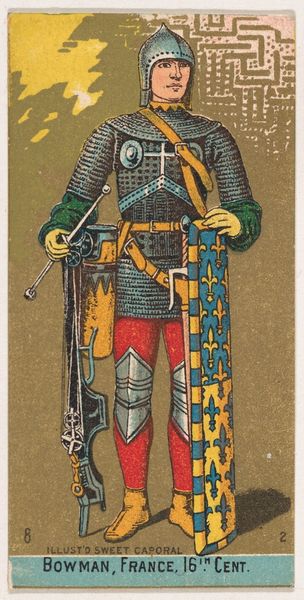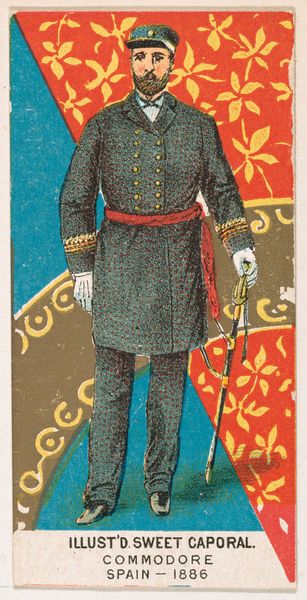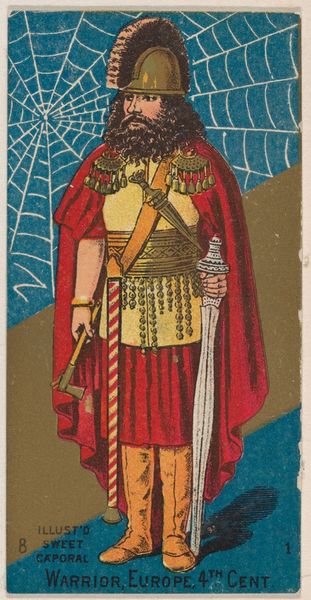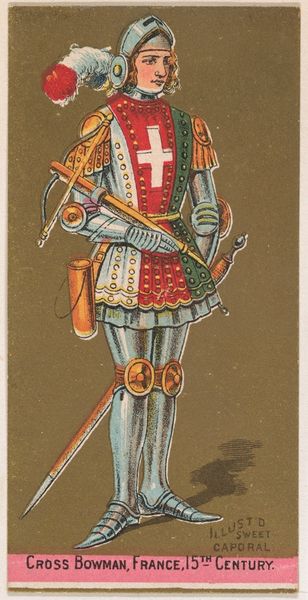
Light Infantry Soldier, Greece, B.C., from the Military Series (N224) issued by Kinney Tobacco Company to promote Sweet Caporal Cigarettes 1888
0:00
0:00
Dimensions: Sheet: 2 3/4 × 1 1/2 in. (7 × 3.8 cm)
Copyright: Public Domain
Curator: This striking print from 1888 is titled "Light Infantry Soldier, Greece, B.C.," and it was originally produced by Kinney Tobacco Company as part of their Military Series to promote Sweet Caporal Cigarettes. Editor: My initial thought is the image presents an odd mix of historical valor and blatant commercialism. The bold lines and simplified forms are visually intriguing, reminiscent of folk art. It’s all rather strange, seeing this ancient figure being used to hawk tobacco. Curator: Absolutely. These trade cards were essentially miniature billboards inserted into cigarette packs. Their production values offer insight into late 19th-century labor practices. The use of chromolithography allowed for mass production, connecting art, commerce, and broader social trends. Editor: Yes, but let's not forget the idealized representation here. The soldier's garb, rendered in vibrant reds and golds, presents a romanticized view of ancient Greece. The materials used—paper, ink, and the printing process itself—contribute to both the accessibility and the potential propaganda inherent in such imagery. What were they even trying to sell, the allure of conquest? Curator: It speaks to the cultural moment: the construction of national identities, colonial aspirations, and the appropriation of historical narratives. These depictions tap into then-current fascination with the classical world but also justify power structures through idealized masculine imagery. Editor: I see it as also revealing of anxieties of the late 19th century, a period of intense industrialization and shifts in labor. Even the use of ukiyo-e-inspired print style is telling, blending traditions and creating something entirely new. Curator: Ultimately, this seemingly simple trade card presents complex layers, doesn’t it? It encourages us to think about how images circulate, who produces them, and whose stories are elevated—and suppressed—in the process. Editor: Exactly. Analyzing it from the lens of labor, we start to understand how such a trinket made its way to the world—a silent record of its means, processes, and distribution chains.
Comments
No comments
Be the first to comment and join the conversation on the ultimate creative platform.
